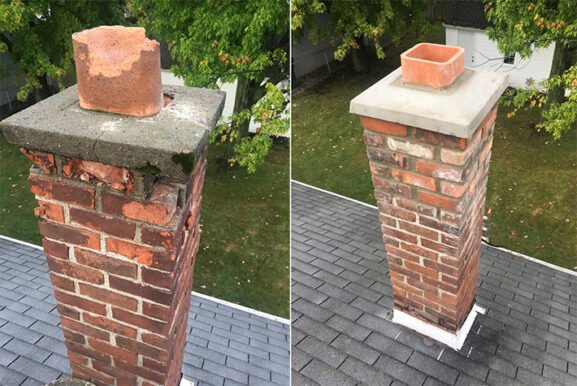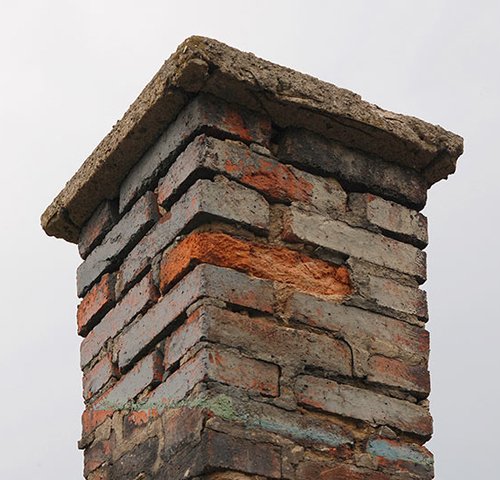Why Chimney Roof Repair Matters for Long-Term Home Protection
Key Takeaways
- Chimney roof repair helps prevent water damage, structural decay, and mold inside your home
- Early intervention can save thousands in future repair costs and protect your home’s value
- Weather exposure and natural aging make regular chimney inspections essential for roof health
- Understanding signs of damage helps homeowners make informed repair decisions before issues escalate
Understanding How Chimney and Roof Systems Interact
The intersection between your chimney and roof is one of the most vulnerable points on your home. While many people see the chimney as a standalone structure, it’s actually part of a complex system that includes flashing, masonry, and roofing materials working together to keep out moisture and weather.
When even one component fails—whether it’s cracked mortar, lifted flashing, or missing shingles around the chimney—leaks can develop quickly. These leaks may appear as ceiling stains, attic mold, or rotted wood structures, but the root of the issue often traces back to a neglected chimney-roof joint.
What Causes Chimney Roof Damage Over Time
There are several reasons chimney roof damage develops, most of which stem from exposure to the elements and natural wear over time. Common causes include:
- Flashing deterioration
The metal that seals the seam between the chimney and roof is called flashing. Over time, weather cycles can cause this material to loosen, rust, or detach entirely, allowing water to slip beneath. - Cracked masonry or mortar
Older chimneys often show signs of mortar joint failure or brick cracking. When this happens, water seeps into the structure and can travel downward, affecting the roof deck and surrounding materials. - Ice dams and freeze-thaw cycles
In colder climates, snow and ice buildup around the chimney can lead to ice dams. Water trapped behind the dam may enter any available cracks or flashing gaps, accelerating deterioration. - Animal activity and nesting
Birds, squirrels, and raccoons are notorious for nesting near or inside chimneys. Their activity can dislodge flashing, damage the chimney crown, or clog vents, all of which put added pressure on the surrounding roof area.
How to Spot Signs of Chimney Roof Damage
Being proactive begins with knowing what to look for. Homeowners should regularly inspect both their chimney and the roof area where it connects. Some red flags include:
- Stains on ceilings or walls near the chimney
- Visible rust or gaps around flashing
- Cracked or crumbling mortar and bricks
- Shingle loss or curling in areas adjacent to the chimney
- Musty smells in the attic or chimney area, which could indicate hidden moisture
If you’re unsure what to look for, hiring a licensed chimney or roofing professional for an annual inspection is a worthwhile investment.
Repairs That Make a Difference
Not all chimney roof damage requires full replacement. In many cases, targeted repairs can restore structural integrity and protect your home from future issues. Here are some of the most common and effective solutions:
Flashing Replacement
Replacing old or improperly installed flashing is one of the most crucial chimney roof repairs. Flashing needs to be watertight and correctly layered beneath shingles. If poorly sealed, even new flashing can fail quickly.
Tuckpointing and Brick Repair
Damaged mortar joints can allow water to pass through and weaken both the chimney and nearby roof. Tuckpointing involves removing and replacing deteriorated mortar, creating a fresh seal against moisture.
Chimney Cap and Crown Repair
A properly fitted chimney cap prevents rain, animals, and debris from entering the flue. The concrete crown also helps shed water away from the masonry. Cracks or missing parts in either of these components can lead to major moisture problems in the roof.
Roof Shingle and Decking Repair
In some cases, water damage from chimney leaks can extend to the roof decking below. Replacing compromised shingles or repairing sections of roof decking may be necessary, particularly if moisture damage has been present for an extended period.
The Role of Climate and Regional Factors
Your location plays a huge role in how often you’ll need chimney roof repairs. Homes in areas with heavy snowfall, frequent rain, or wide temperature swings are especially at risk. For example, homes in the Northeast often experience freeze-thaw conditions that cause rapid brick and mortar deterioration.
On the other hand, homes in areas with intense sun and heat may see flashing warp or become brittle. Understanding your local climate and how it affects your home’s structure helps guide maintenance schedules.
According to the National Roofing Contractors Association, professional inspections should be done at least once a year, and after major storms or winter seasons. Regular maintenance isn’t just about spotting leaks—it’s about identifying the root causes of potential damage before they escalate.
Preventive Maintenance Is Your Best Investment
Waiting until visible leaks appear can be an expensive mistake. Water intrusion is often silent in the early stages, quietly rotting wood structures, rusting metal components, and degrading insulation. The cost of repair only grows the longer the damage remains unchecked.
Preventive steps include:
- Scheduling annual chimney and roof inspections
- Replacing flashing at the first sign of rust or movement
- Addressing minor masonry cracks before they widen
- Clearing gutters and roof valleys to reduce water buildup
- Installing chimney caps and applying waterproof sealants
These steps don’t just extend the life of your chimney and roof. They help maintain the overall structural integrity of your home.
Smart Timing Can Minimize Disruption and Costs
Timing your chimney roof repairs wisely can make the process smoother and potentially less expensive. Warmer months provide better conditions for masonry curing and roof work. Contractors also tend to be more available during late spring or early fall before the winter rush begins.
If repairs are needed urgently due to leaks, don’t delay. Emergency repair services can stabilize the issue before a full restoration is scheduled, but the faster you act, the better the outcome.
Protecting Your Home Through Long-Term Awareness
Chimney roof repair is more than a fix for isolated leaks—it’s a critical part of maintaining your home’s health, safety, and long-term value. Understanding the role your chimney plays in roof performance helps you make better choices as a homeowner. With a proactive mindset and attention to detail, you can avoid costly surprises and extend the lifespan of your entire roofing system.

